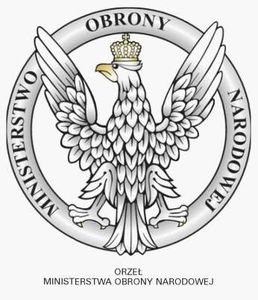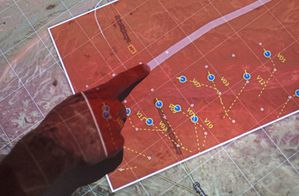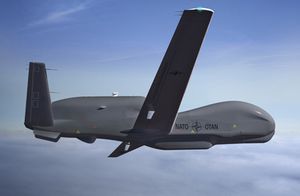
July 6, 2012 Cheryl Pellerin / American Forces Press Service – defpro.com
WASHINGTON | NATO seeks to assume a more global perspective, play its part globally and strengthen its ability to act with partners around the globe, Secretary General Anders Fogh Rasmussen said
in London Jul. 4.
In a speech at Chatham House, Rasmussen said forging closer links with partners in Asia, Africa and elsewhere is crucial to guaranteeing future security in the Euro-Atlantic area.
“Today we hold regular consultations with all our partners on security issues of common interest,” he said. “I would like to see those consultations become much more frequent, focused and
substance driven.”
Rasmussen described the development of clusters of willing and able allies and partners ready to cooperate in specific areas. “I see these clusters being flexible enough to accommodate different
groups of partners, yet focused enough to deliver concrete results,” he said, in areas such as training and education, emerging security challenges and “smart defense,” which is a NATO initiative
based on allies and partners pooling and sharing capabilities, setting priorities and coordinating efforts.
Many partner countries participate in NATO’s military education, training and exercises on an ad-hoc basis, and Rasmussen called for a more structured approach and for the broadest possible range
of national participation in such activities.
“From Afghanistan to the Balkans and last year over Libya, our partners have played a vital role in the operational outcome and the political legitimacy of our missions,” Rasmussen said.
“They have made NATO stronger and kept the world safer,” he added, “so it is as important for NATO to invest in strong partnerships as it is to invest in modern military hardware and in flexible
forces.”
An example of such flexibility, the secretary general said, includes cooperation among special operations forces, the use of drones, and collaboration on cyber security issues.
Cooperation among special operations forces, Rasmussen said, offers considerable potential to learn more and do more, both for NATO and for its partners. “We must build on the lessons we learned
together in action in Afghanistan so we can boost our ability to act together in the future,” he said.
Rasmussen said allies’ use of unmanned aircraft does not constitute a problem for NATO. “We actually try to promote the use of drones to improve gathering of information and intelligence,
surveillance [and] reconnaissance.” In fact, he said, drones helped NATO to conduct what he called a “precision campaign in Libya” while minimizing civilian casualties and collateral damage.
Partners also could do more together to deal with emerging security challenges such as those in the cyber domain, the secretary general said.
“We are very focused on cybersecurity,” Rasmussen said, adding that NATO gives strength in cybersecurity its highest priority and has taken steps to strengthen its own systems.
“The latest statistics indicate that we are attacked 100 times a day, so you can imagine that there is a strong interest out there in what NATO is doing,” he noted. “We have to protect our
systems more effectively, and we have taken a number of steps in that direction.”
NATO ally Estonia suffered weeks of cyber attacks in 2007, he noted.
“It's not just theory -- it's a reality,” Rasmussen said of the existence of cyber threats and of the necessity to develop methods to confront them. Toward that purpose, he said, NATO has
established a center of excellence in Estonia’s capital of Tallinn that provides information and facilitates the sharing of experience and best practices.
“We have established a unit that can help allies that are cyber attacked if they don’t have the capacity themselves to counter such attacks,” he said. Confronting such threats successfully,
Rasmussen added, demands a high degree of consultation, coordination and cooperation.
Along with expanding the range of issues in which NATO and its partners cooperate, Rasmussen said, the alliance also must expand the range of nations it engages, including China and India.
China, for example, is a permanent member of the United Nations Security Council and is playing an increasingly important global role, he said.
“As an organization that is driven by the U.N. Charter of Principles, NATO needs to better understand China and define areas where we can work together to guarantee peace and stability,”
Rasmussen added. “There are other important countries too, such as India, with whom we should increase our dialogue and seek opportunities for cooperation.”
But one partnership stands out above all the others, the secretary general said.
“The transatlantic bond lies at the very heart of NATO, [representing] our common belief in freedom, democracy and the rule of law. And it provides shared leadership between North America and
Europe,” he said.
Rasmussen said some see the U.S. pivot to focus on the Asia-Pacific region as the end of this unique partnership. But they are wrong, he said.
“The security of America and Europe is indivisible,” Rasmussen said. “We are stronger and safer when we work together, and that is why NATO remains the indispensable alliance.”
Around this essential transatlantic bond, the secretary general said, NATO must strengthen its partnerships in Europe, with Russia and around the globe, “because in the 21st century, we are all
connected whether we want it or not.”
A positive connection and continued engagement with partners, Rasmussen said, “is a cure for pessimism, a cause for optimism, and key for the security we all seek.”





















